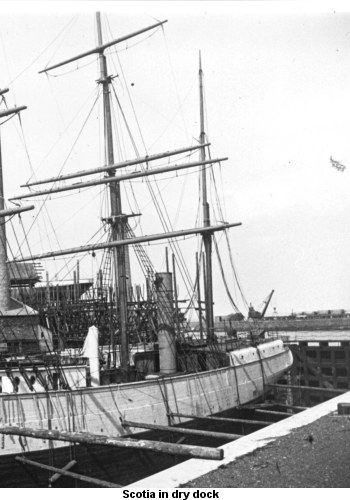
| Glasgow Digital Library | Voyage of the Scotia | BRUCE | PEOPLE | SHIP | ANTARCTIC | INDEX |
|---|
Bruce, like Scott, went across to Norway to consult with the Arctic explorer Fridtjof Nansen. He had met Nansen in Franz Joseph Land and they had remained firm friends. Nansen suggested a Norwegian whaler for the trip and Bruce purchased the whaler Hekla for £2,620. (Bruce had wanted to purchase Balaena but the price was too high.)

Hekla was sailed across the North Sea to Aberdeen, then to Peterhead and Inverness and through the Caledonian Canal to Oban and finally Troon.
The naval architect George Watson gave his services free for the refit of Hekla (to be renamed Scotia). Although the ship had been inspected by Nansen and by Colin Archer the architect of Nansen's own ship, it proved to be in poor condition. The outer layers of wood were good but below them the wood was rotten. Watson's comment was: 'Fill her with stones and take her to Ailsa Craig and sink her.' Scotia was virtually rebuilt and in her final form was one of the most graceful of polar ships. The ship was fitted out in Ailsa Shipyard at Troon with new spars and a new engine (see section 8).
Scotia was a three-masted wooden barque 42 metres (140 feet) long, with a beam of nine metres (29 feet), draft or depth 4.5 metres (15 feet) and a freight-carrying capacity of 357 tons.
| Glasgow Digital Library | Voyage of the Scotia | BRUCE | PEOPLE | SHIP | ANTARCTIC | INDEX |
|---|